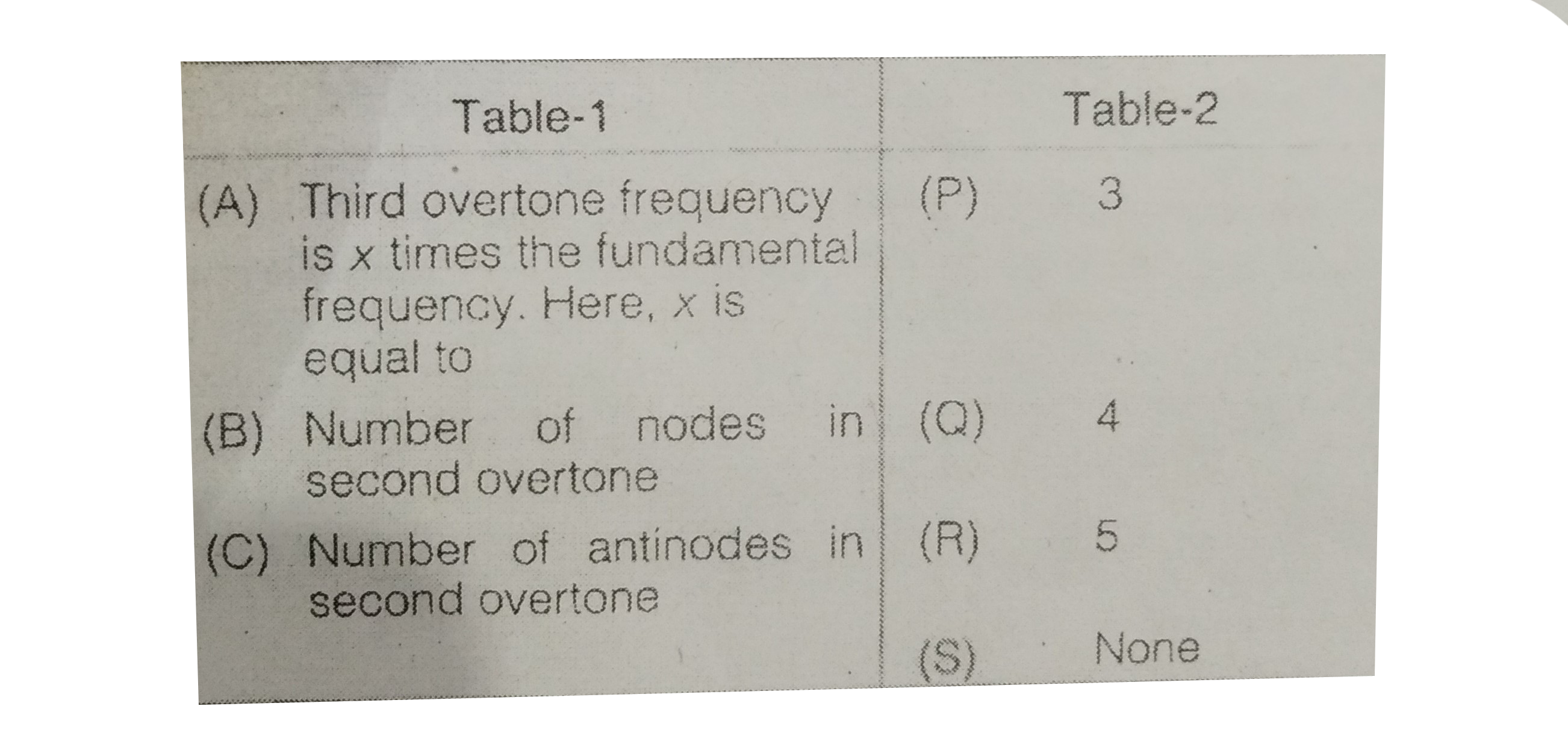Compare the length of a closed organ pipe and an open organ pipe, if the second overtone of the open pipe is unison with the second overtone of the closed organ pipe.
To solve the problem of comparing the lengths of a closed organ pipe and an open organ pipe when their second overtones are in unison, we can follow these steps:
Step 1: Understand the frequency formulas for both pipes
- For an open organ pipe, the frequency of the nth overtone is given by:
fn=nv2L′
where L′ is the length of the open pipe, v is the speed of sound, and n is the overtone number.
- For a closed organ pipe, the frequency of the nth overtone is given by:
fn=(2n+1)v4L
where L is the length of the closed pipe.
Step 2: Identify the overtone numbers
- The second overtone of the open pipe corresponds to n=3.
- The second overtone of the closed pipe corresponds to n=2.
Step 3: Write the frequency equations for the second overtones
- For the open pipe (second overtone):
f3=3v2L′
- For the closed pipe (second overtone):
f2=5v4L
Step 4: Set the frequencies equal to each other
Since the problem states that the second overtones are in unison, we can equate the two frequencies:
3v2L′=5v4L
Step 5: Simplify the equation
We can cancel v from both sides (assuming v≠0):
32L′=54L
Step 6: Cross-multiply to solve for the ratio of lengths
Cross-multiplying gives us:
3⋅4L=5⋅2L′
12L=10L′
Step 7: Rearranging to find the ratio of lengths
Dividing both sides by 2:
6L=5L′
Now, rearranging gives:
LL′=56
Conclusion
The ratio of the lengths of the closed organ pipe to the open organ pipe is:
L:L′=5:6
---
- For an open organ pipe, the frequency of the nth overtone is given by:
fn=nv2L′
where L′ is the length of the open pipe, v is the speed of sound, and n is the overtone number.
fn=(2n+1)v4L
where L is the length of the closed pipe.
- The second overtone of the open pipe corresponds to n=3.
- The second overtone of the closed pipe corresponds to n=2.
- For the open pipe (second overtone):
f3=3v2L′
f2=5v4L
Since the problem states that the second overtones are in unison, we can equate the two frequencies:
3v2L′=5v4L
We can cancel v from both sides (assuming v≠0):
32L′=54L
Cross-multiplying gives us:
3⋅4L=5⋅2L′
12L=10L′
Dividing both sides by 2:
6L=5L′
Now, rearranging gives:
LL′=56
The ratio of the lengths of the closed organ pipe to the open organ pipe is:
L:L′=5:6
Topper's Solved these Questions
- WAVESBOOK - AAKASH INSTITUTE ENGLISHCHAPTER - WAVESEXERCISE - Try Yourself
65 Videos
- WAVESBOOK - AAKASH INSTITUTE ENGLISHCHAPTER - WAVESEXERCISE - Assignment (Section-A)
55 Videos
- WAVE OPTICSBOOK - AAKASH INSTITUTE ENGLISHCHAPTER - WAVE OPTICSEXERCISE - Assignment (Section-J (Aakash Challengers question))
1 Videos
- WORK, ENERGY AND POWERBOOK - AAKASH INSTITUTE ENGLISHCHAPTER - WORK, ENERGY AND POWEREXERCISE - Assignment (SECTION - D)
13 Videos
Similar Questions
Knowledge Check
A closed organ pipe and an open organ pipe have their first overtones identical in frequency. Their lenghts are in the ratio
A1:2B2:3C3:4D4:4
In closed organ pipe at one end…………….

View SolutionFor a closed organ pipe, match the following .

View SolutionA closed organ pipe and an open organ pipe are tuned to the same fundamental frequency. The ratio of their lengths is
View SolutionA closed organ pipe and an open organ pipe are tuned to the same fundamental frequency. The ratio of their lengths is
View SolutionRegarding an open organ pipe , which of the following is correct?
View SolutionFifth overtone of a closed pipe is found to be in in unison with the third overtone of an open organ pipe. Find ratio of length of open organ pipe to that of closed organ pipe .
View SolutionThe fundamental frequency of a closed organ pipe of length 20cm is equal to the second overtone of an organ pipe open at both the ends. The length of organ pipe open at both the ends is
View Solution

